 W
WAnimal rights is the idea in which some, or all, animals are entitled to the possession of their own existence and that their most basic interests—such as the need to avoid suffering—should be afforded the same consideration as similar interests of human beings. That is, some species of animals have the right to be treated as individuals, with their own desires and needs, rather than as an unfeeling property.
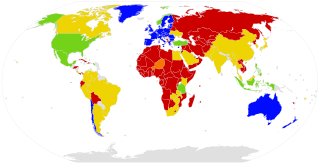 W
WRights affecting non-human animals vary greatly by country or jurisdiction — encompassing everything from the legal recognition of non-human animal sentience to the absolute lack of any anti-cruelty laws with no regard for animal welfare.
 W
WAnimal testing, also known as animal experimentation, animal research and in vivo testing, is the use of non-human animals in experiments that seek to control the variables that affect the behavior or biological system under study. This approach can be contrasted with field studies in which animals are observed in their natural environments or habitats. Experimental research with animals is usually conducted in universities, medical schools, pharmaceutical companies, defense establishments and commercial facilities that provide animal-testing services to industry. The focus of animal testing varies on a continuum from pure research, focusing on developing fundamental knowledge of an organism, to applied research, which may focus on answering some question of great practical importance, such as finding a cure for a disease. Examples of applied research include testing disease treatments, breeding, defense research and toxicology, including cosmetics testing. In education, animal testing is sometimes a component of biology or psychology courses. The practice is regulated to varying degrees in different countries.
 W
WThe Asilomar Conference on Recombinant DNA was an influential conference organized by Paul Berg to discuss the potential biohazards and regulation of biotechnology, held in February 1975 at a conference center at Asilomar State Beach. A group of about 140 professionals participated in the conference to draw up voluntary guidelines to ensure the safety of recombinant DNA technology. The conference also placed scientific research more into the public domain, and can be seen as applying a version of the precautionary principle.
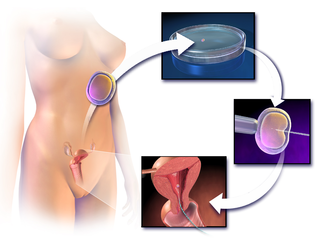 W
WAssisted reproductive technology (ART) includes medical procedures used primarily to address infertility. This subject involves procedures such as in vitro fertilization, intracytoplasmic sperm injection (ICSI), cryopreservation of gametes or embryos, and/or the use of fertility medication. When used to address infertility, ART may also be referred to as fertility treatment. ART mainly belongs to the field of reproductive endocrinology and infertility. Some forms of ART may be used with regard to fertile couples for genetic purpose. ART may also be used in surrogacy arrangements, although not all surrogacy arrangements involve ART.
 W
WBaby Gender Mentor is the trade name of a controversial blood test designed for prenatal sex discernment. The test was manufactured by Acu-Gen Biolab, Inc., a biotech company in Lowell, Massachusetts, United States. The test made a media debut on 17 June 2005 on The Today Show and it was featured in Newsweek in October 2005. About 4,500 people had purchased the test by March 2006.
 W
WThe Bioethics Bowl is an intercollegiate, academic competition among undergraduate students at accredited four-year institutions of higher education. It takes place each April on a college campus. Unlike the Intercollegiate Ethics Bowl, which debates cases across the curriculum from agricultural and engineering ethics to issues of grade inflation and communications, the Bioethics Bowl focuses exclusively on ethical issues in the health and biological sciences.
 W
WBiological warfare (BW)—also known as germ warfare—is the use of biological toxins or infectious agents such as bacteria, viruses, insects, and fungi with the intent to kill or incapacitate humans, animals or plants as an act of war. Biological weapons are living organisms or replicating entities. Entomological (insect) warfare is a subtype of BW.
 W
WBioprospecting is the exploration of natural sources for small molecules, macromolecules and biochemical and genetic information that could be developed into commercially valuable products for the agricultural, aquaculture, bioremediation, cosmetics, nanotechnology, or pharmaceutical industries. In the pharmaceutical industry, for example, almost one third of all small-molecule drugs approved by the U.S. Food and Drug Administration (FDA) between 1981 and 2014 were either natural products or compounds derived from natural products.
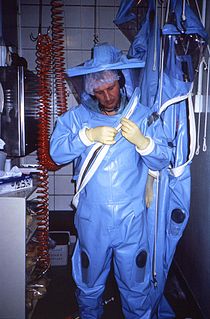 W
WBiosafety is the prevention of large-scale loss of biological integrity, focusing both on ecology and human health. These prevention mechanisms include conduction of regular reviews of the biosafety in laboratory settings, as well as strict guidelines to follow. Biosafety is used to protect from harmful incidents. Many laboratories handling biohazards employ an ongoing risk management assessment and enforcement process for biosafety. Failures to follow such protocols can lead to increased risk of exposure to biohazards or pathogens. Human error and poor technique contribute to unnecessary exposure and compromise the best safeguards set into place for protection.
 W
WCitizen Cyborg: Why Democratic Societies Must Respond to the Redesigned Human of the Future is a 2004 non-fiction book by bioethicist and sociologist James Hughes, which articulates democratic transhumanism as a socio-political ideology and program.
 W
WConjugated estrogens (CEs), or conjugated equine estrogens (CEEs), sold under the brand name Premarin among others, is an estrogen medication which is used in menopausal hormone therapy and for various other indications. It is a mixture of the sodium salts of estrogen conjugates found in horses, such as estrone sulfate and equilin sulfate. CEEs are available in the form of both natural preparations manufactured from the urine of pregnant mares and fully synthetic replications of the natural preparations. They are formulated both alone and in combination with progestins such as medroxyprogesterone acetate. CEEs are usually taken by mouth, but can also be given by application to the skin or vagina as a cream or by injection into a blood vessel or muscle.
 W
WA designer baby is a baby whose genetic makeup has been selected or altered, often to include a particular gene or to remove genes associated with a disease. This process usually involves analysing a wide range of human embryos to identify genes associated with particular diseases and characteristics, and selecting embryos that have the desired genetic makeup; a process known as preimplantation genetic diagnosis. Other potential methods by which a baby's genetic information can be altered involve directly editing the genome before birth. This process is not routinely performed and only one instance of this is known to have occurred as of 2019, where Chinese twins Lulu and Nana were edited as embryos, causing widespread criticism.
 W
WThe eradication or abolition of suffering is the concept of using biotechnology to create a permanent absence of pain and suffering in all sentient beings.
 W
WThe ethics of uncertain sentience refers to questions surrounding the treatment of and moral obligations towards individuals whose sentience—the capacity to subjectively sense and feel—and resulting ability to experience pain is uncertain; the topic has been particularly discussed within the field of animal ethics, with the precautionary principle frequently invoked in response.
 W
WFixing Sex: Intersex, Medical Authority, and Lived Experience, a book by Stanford anthropologist and bioethicist Katrina Karkazis, was published in 2008. Described as "thoughtful", "meticulous", and an "authoritative treatise on intersex", the book examines the perspectives of intersex people, their families, and clinicians to offer compassionate look at the treatment of people born with atypical sex characteristics.
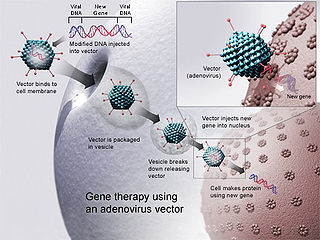 W
WGene therapy is a medical field which focuses on the utilization of the therapeutic delivery of nucleic acids into a patient's cells as a drug to treat disease. The first attempt at modifying human DNA was performed in 1980 by Martin Cline, but the first successful nuclear gene transfer in humans, approved by the National Institutes of Health, was performed in May 1989. The first therapeutic use of gene transfer as well as the first direct insertion of human DNA into the nuclear genome was performed by French Anderson in a trial starting in September 1990. It is thought to be able to cure many genetic disorders or treat them over time.
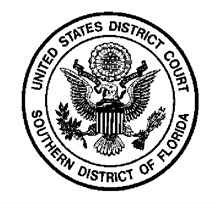 W
WGreenberg v. Miami Children's Hospital Research Institute, 264 F. Supp. 2d 1064, was a decision by the United States District Court for the Southern District of Florida which ruled that individuals do not own their tissue samples when researchers take them for testing.
 W
WHeLa is an immortal cell line used in scientific research. It is the oldest and most commonly used human cell line. The line is derived from cervical cancer cells taken on February 8, 1951, from Henrietta Lacks, a 31-year-old African-American mother of five, who died of cancer on October 4, 1951. The cell line was found to be remarkably durable and prolific, which allows it to be used extensively in scientific study.
 W
WHuman Rights between the Sexes is an analysis of the human rights of intersex people in 12 countries. It was written by Dan Christian Ghattas of the Internationalen Vereinigung Intergeschlechtlicher Menschen and published in October 2013 by the Heinrich Böll Foundation. The countries studied were Australia, Belgium, France, Germany, New Zealand, Serbia, South Africa, Taiwan, Turkey, Uganda, Ukraine and Uruguay.
 W
WThe Indigenous Peoples Council on Biocolonialism (IPCB) is a non-profit organization based in Nixon, Nevada for the purpose of political activism against the emergent field of population genetics for human migration research. The term "biocolonialism" is a neologism —a portmanteau of "bio-" and "colonialism" —used by the IPCB to pejoratively characterise population genetics research as part of invasive and destructive assimilation against indigenous peoples.
 W
WThree International Eugenics Congresses took place between 1912 and 1932 and were the global venue for scientists, politicians, and social leaders to plan and discuss the application of programs to improve human heredity in the early twentieth century.
 W
WThe International Union for the Protection of New Varieties of Plants or UPOV is a non-United Nations sui generis intergovernmental organization with headquarters in Geneva, Switzerland. The current Secretary-General of UPOV is Daren Tang. The expression UPOV Convention also refers to one of the three international legal instruments that relate to the Union, namely the 1991 Act of the UPOV Convention, 1978 Act of the UPOV Convention and 1961 Act of the UPOV Convention with Amendments of 1972
 W
WSir Ian McColl Kennedy, QC is a British academic lawyer who has specialised in the law and ethics of health. He was appointed to chair the Independent Parliamentary Standards Authority in 2009.
 W
WThis is an alphabetical list of plants used in herbalism.
 W
WA louse-feeder was a job in interwar and Nazi-occupied Poland, at the Lviv Institute for Study of Typhus and Virology and the associated Institute in Kraków, Poland. Louse-feeders were human sources of blood for lice infected with typhus, which were then used to research possible vaccines against the disease.
 W
WAlexander "Sandy" McCall Smith, CBE, FRSE, is a British-Zimbabwean writer and Emeritus Professor of Medical Law at the University of Edinburgh. In the late 20th century, McCall Smith became a respected expert on medical law and bioethics and served on British and international committees concerned with these issues.
 W
WGlenn E. McGee is the Deputy Provost and Professor of health policy at the University of New Haven. He has been noted for his work on reproductive technology and genetics and for advancing a theory of pragmatic bioethics, as well as the role of ethicists in society and in local and state settings in particular.
 W
WJonathan D. Moreno is an American philosopher and historian who specializes in the intersection of bioethics, culture, science, and national security, and has published seminal works on the history, sociology and politics of biology and medicine.
 W
WThe National Core for Neuroethics at the University of British Columbia was established in August 2007, with support from the Canadian Institutes of Health Research, the Institute of Mental Health and Addiction, the Canada Foundation for Innovation, the British Columbia Knowledge Development Fund, the Canada Research Chairs program, the UBC Brain Research Centre and the UBC Institute of Mental Health. Co-founded by Judy Illes and Peter Reiner, the Core studies neuroethics, with particular focus on ethics in neurodegenerative disease and regenerative medicine, international and cross-cultural challenges in brain research, neuroimaging and ethics, the neuroethics of enhancement, and personalized medicine.
 W
WPostgenderism is a social, political and cultural movement which arose from the eroding of the cultural, psychological, and social role of gender, and an argument for why the erosion of binary gender will be liberatory.
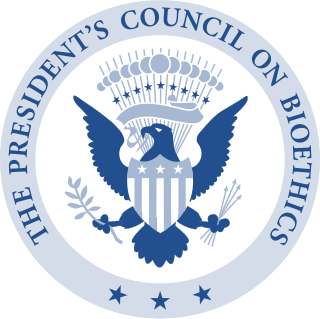 W
WThe President's Council on Bioethics (PCBE) was a group of individuals appointed by United States President George W. Bush to advise his administration on bioethics. Established on November 28, 2001, by Executive Order 13237, the council was directed to "advise the President on bioethical issues that may emerge as a consequence of advances in biomedical science and technology". It succeeded and largely replaced the National Bioethics Advisory Commission, appointed by President Bill Clinton in 1996, which expired in 2001.
 W
WThe principle of double effect – also known as the rule of double effect; the doctrine of double effect, often abbreviated as DDE or PDE, double-effect reasoning; or simply double effect – is a set of ethical criteria which Christian philosophers, and some others, have advocated for evaluating the permissibility of acting when one's otherwise legitimate act may also cause an effect one would otherwise be obliged to avoid. The first known example of double-effect reasoning is Thomas Aquinas' treatment of homicidal self-defense, in his work Summa Theologica.
 W
WPrinciplism is an applied ethics approach to the examination of moral dilemmas that is based upon the application of certain ethical principles. This approach to ethical decision-making has been adopted enthusiastically in many different professional fields, largely because it sidesteps complex debates in moral philosophy at the theoretical level.
 W
WProject 112 was a biological and chemical weapon experimentation project conducted by the United States Department of Defense from 1962 to 1973.
P3G (Public Population Project in Genomics and Society) is a not-for-profit international consortium dedicated to facilitating collaboration between researchers and biobanks working in the area of human population genomics. P3G is member-based and composed of experts from the different disciplines in the areas of and related to genomics, including epidemiology, law, ethics, technology, biomolecular science, etc. P3G and its members are committed to a philosophy of information sharing with the goal of supporting researchers working in areas that will improve the health of people around the world.
 W
WRemote control animals are animals that are controlled remotely by humans. Some applications require electrodes to be implanted in the animal's nervous system connected to a receiver which is usually carried on the animal's back. The animals are controlled by the use of radio signals. The electrodes do not move the animal directly, as if controlling a robot; rather, they signal a direction or action desired by the human operator and then stimulate the animal's reward centres if the animal complies. These are sometimes called bio-robots or robo-animals. They can be considered to be cyborgs as they combine electronic devices with an organic life form. Because of the surgery required, and the moral and ethical issues involved, there has been criticism aimed at the use of remote control animals, especially regarding animal welfare and animal rights. A similar, non-invasive application has been reported which stimulates the brain with ultrasound to control the animal. Some applications use vibrations or sound to control the movements of the animals.
 W
WProject SHAD, an acronym for Shipboard Hazard and Defense, was part of a larger effort called Project 112, which was conducted during the 1960s. Project SHAD encompassed tests designed to identify U.S. warships' vulnerabilities to attacks with chemical agents or biological warfare agents and to develop procedures to respond to such attacks while maintaining a war-fighting capability.
 W
WMildred Z. Solomon is a global leader in bioethics. She is the president of The Hastings Center, an organization instrumental in the establishment of the field of bioethics. Solomon helped to develop the subfield of empirical ethics and has conducted numerous studies on a broad range of bioethics topics. She is also a professor at Harvard Medical School, where she directs the Fellowship Program at the Center for Bioethics at Harvard Medical School, which has prepared over 100 bioethicists from across the globe.
 W
WSurrogacy is an arrangement, often supported by a legal agreement, whereby a woman agrees to bear a child for another person or persons, who will become the child's parent(s) after birth.
 W
WThe Three Rs (3Rs) in relation to science are guiding principles for more ethical use of animals in testing. They were first described by W. M. S. Russell and R. L. Burch in 1959. The 3Rs are:Replacement: methods which avoid or replace the use of animals in research Reduction: use of methods that enable researchers to obtain comparable levels of information from fewer animals, or to obtain more information from the same number of animals. Refinement: use of methods that alleviate or minimize potential pain, suffering or distress, and enhance animal welfare for the animals used.
 W
WTranshumanism is a philosophical movement that advocates for the transformation of the human condition by developing and making widely available sophisticated technologies able to greatly modify or enhance human intellect and physiology.
 W
WGene therapy utilizes the delivery of DNA into cells, which can be accomplished by several methods, summarized below. The two major classes of methods are those that use recombinant viruses and those that use naked DNA or DNA complexes.